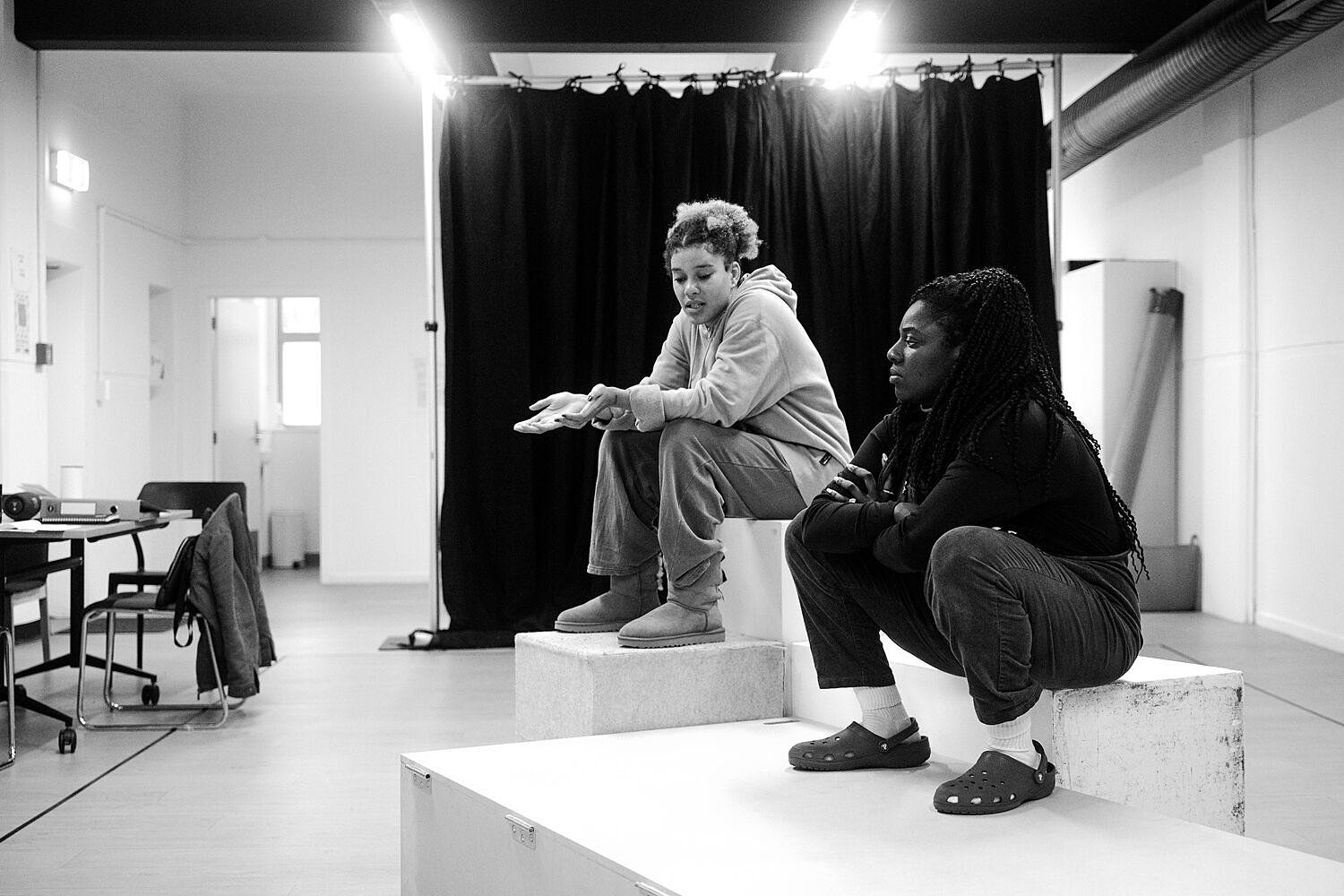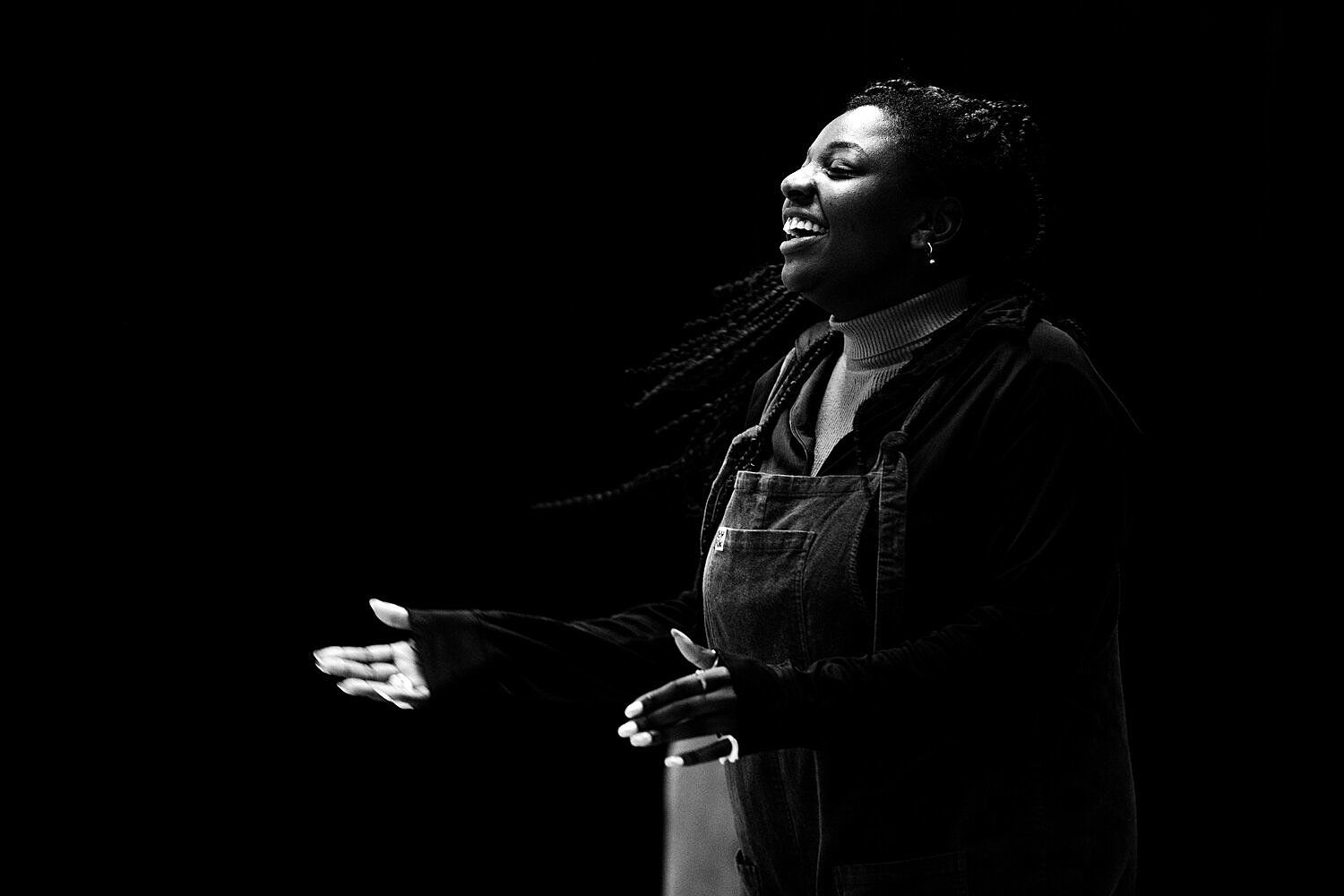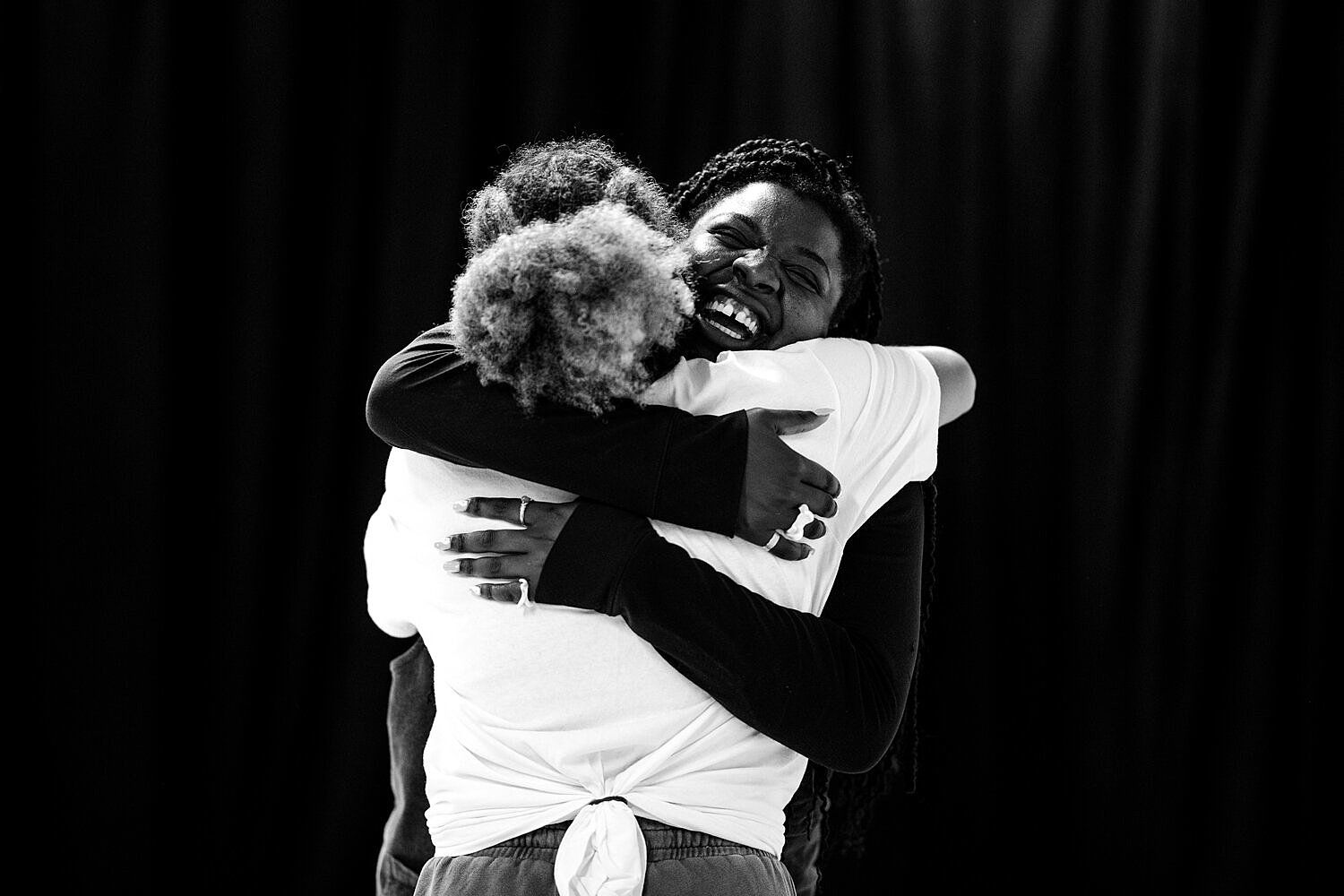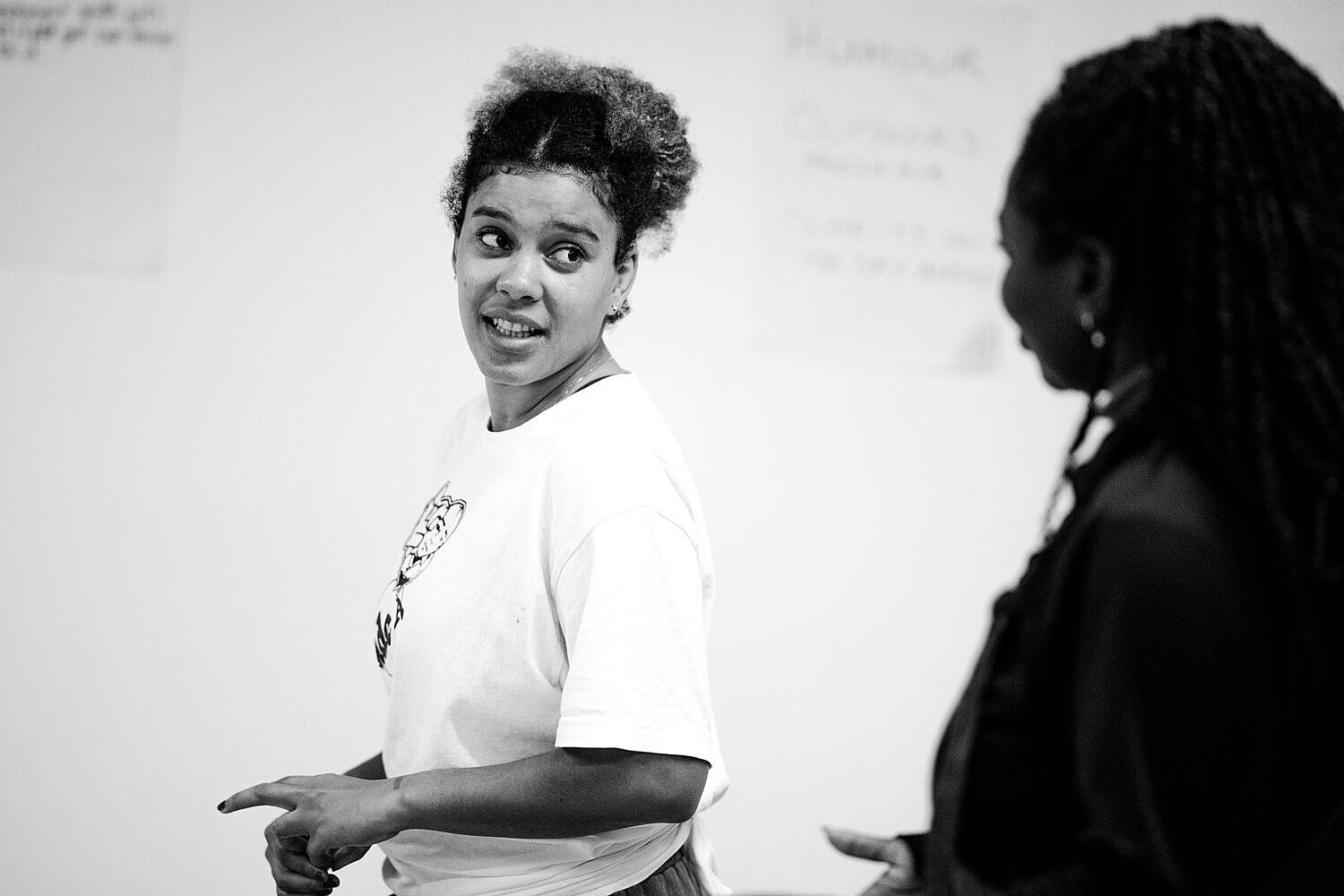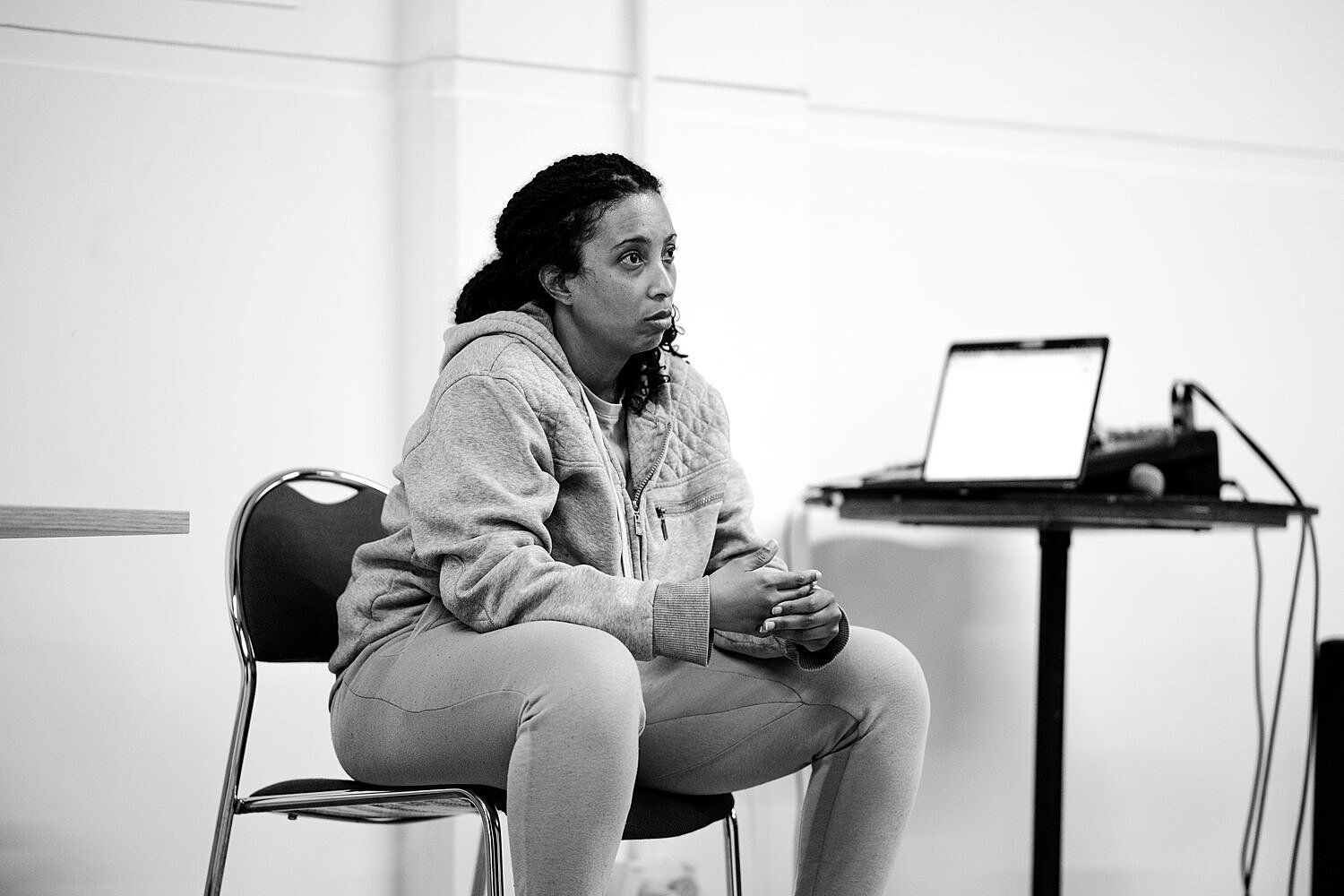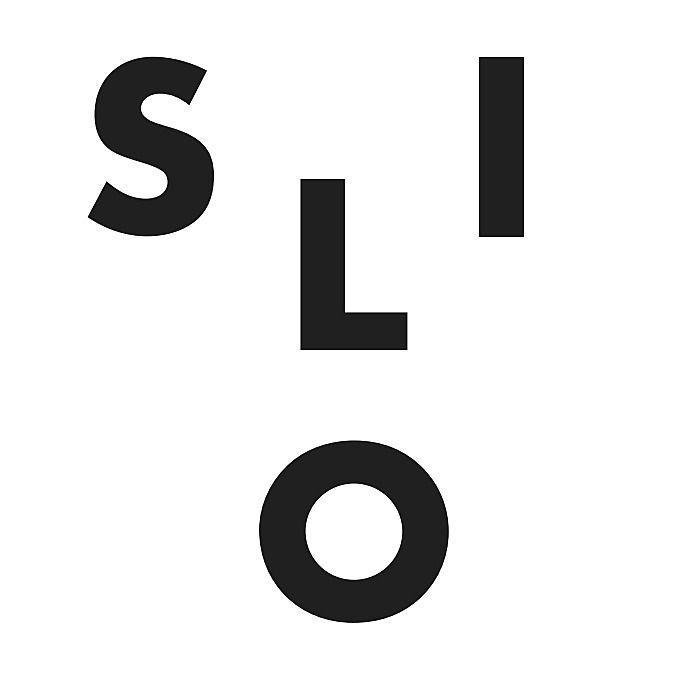When It All Falls Down in the Twittersphere
Makanaka Tuwe takes a look at seven methods of killing kylie jenner, Silo Theatre’s latest offering about the nature of friendship, colourism and cultural appropriation.
Moving between real life and the virtual timeline, Black British playwright Jasmine Lee-Jones’ seven methods of killing kylie jenner (SMoKKJ) transports audiences to the Twittersphere and Cleo’s bedroom to witness a witty and honest dialogue that explores friendship, Queerness, cultural appropriation and the online world. What begins as a Twitter thread expressing the desire to kill Kylie Jenner soon reveals itself to be a desire to recentre the humanity of Black women. Staged in Aotearoa by Silo Theatre, the play explores the fluidity between the virtual space and IRL (in real life), highlighting the blurred lines between online and IRL identities.
After breaking up with her boyfriend, Cleo, aka @INCOGNEGRO (Batanai Mashingaidze), starts a viral Twitter thread (the Twittersphere) detailing methods with which Kylie Jenner could be killed. Her best friend Kara (Grace Bentley-Tsibuah) tries to understand IRL what’s going on, and their conversation gets heated, spanning colourism, homophobia and the weariness and exhaustion of Black women. Although Kara agrees with Cleo’s perspective, she finds aspects of her tweets outrageous. She tells Cleo, “See, why couldn’t you just tweet that. A simple, intelligent disagreement with a dose of wit. Like you usually do on that account. Nuanced. No killings. No knife emojis. Nobody haffi dead.” This enrages Cleo, who reckons she should be able to vent her frustrations in peace.
After breaking up with her boyfriend, Cleo, aka @INCOGNEGRO (Batanai Mashingaidze), starts a viral Twitter thread (the Twittersphere) detailing methods with which Kylie Jenner could be killed
As Cleo’s thread continues, I realise she’s detailing the different ways systems kill Black people and the injustices piled on Black women. In conversation with Kara, she says, “In under 50 characters, it colludes in the systematic historical and present-day dehumanisation of the Black female body and the buttressing and idolatry of white womanhood in abusive hegemonic white infrastructures.”
Directed for Silo by Zimbabwean New Zealander Keagan Carr Fransch, the play’s use of Kylie Jenner is an example of white infrastructures that bolster white womanhood, such as the media and beauty industry. It provides a metaphor for whiteness, connecting the thread of historical systemic injustices and present-day impacts. It contextualises how history isn’t a thing of the past; after all, people and peoples are living histories. The dialogue in SMoKKJ is also a clever presentation to illustrate the ways non-Black people profit from Black aesthetics. The whole play feels like a Narnia-type portal that at first provides a lens into the extraction of Black cultures, Black bodies and Black mannerisms. As you lean into the dialogue, you experience a moment where everything flashes before your eyes and you travel back in time to find out the ways Khoisan woman Ssehura’s life is connected to the Kardashian-Jenner family. IKR (I know right)!
The whole play feels like a Narnia-type portal that provides a lens into the extraction of Black cultures, Black bodies and Black mannerisms
* Batanai Mashingaidze (Cleo) in rehearsal. Photo: David St. George
Ssehura or, as she later became known, Saartjie (or Sarah) Baartman, was from the Eastern Cape of South Africa. During a dispute with Dutch colonialists, her husband was killed, and she was sold as a slave to Pieter William, who changed her name to Saartjie. In 1810, she signed a contract with Pieter’s friend to be his house servant and occasional entertainer. It’s unclear whether Ssehura willingly signed or was forced to, but she was further dehumanised when she arrived in Europe. She was presented as the freak-show Hottentot Venus (Venus being the Roman goddess of fertility) and was forced to sing and dance, often naked, for crowds of white onlookers. Sometimes she was suspended in a cage while being poked, prodded and groped. In Ireland, Belgium, Paris and Britain, she was exhibited in human zoos alongside animals. Her body was advertised as obscene, grotesque and lascivious because of her protruding buttocks. Fast-forward to now, this body type is associated with Fashion Nova models and Instagram influencers.
The tension that Cleo tweets and speaks to is that many of us were, and continue to be, bullied and discriminated against for natural features that, when appropriated by white women, are profitable
In 2018, author and scholar Emma Dabiri wrote about the phenomenon of blackfishing, where white women use various methods to appear racially ambiguous. In this reinvention, ‘over-tanning’, bronzer, fuller lips, surgery, textured hair and protective styles like braids are used to flirt with visual suggestions of Blackness. The tension that Cleo tweets and speaks to is that many of us were, and continue to be, bullied and discriminated against for natural features that, when appropriated by white women, are profitable. As Emma points out, “it’s about power, desire and ownership”, which eerily mirrors the experiences and different ways Black women’s bodies are used. From Henrietta Lacks, whose cells were sold without consent from her family, to the way enslaved women were used for breastfeeding white children and punished if they were found feeding their own. To the literal stealing of Black women’s work in various industries and the donning of our features and aesthetics.
A Forbes article from March 2019 declaring Kylie as the youngest self-made billionaire sets the scene for SMoKKJ
The Kardashian-Jenner family often makes headlines for the way they ‘borrow’ from Black cultures. A Forbes article from March 2019 declaring Kylie as the youngest self-made billionaire sets the scene for SMoKKJ and the thread of tweets that sets Cleo and Kara on an emotional rollercoaster.
In their conversation, the audience is invited into a very intimate aspect of Black kinship and companionship. The space we create to express our full selves, move through some painful and heavy shit, and spill the tea on our sex lives and relationships. Most importantly, the rituals and practices we share and engage in with each other for our healing. In a conversation with director Keagan, she mentions that what we witness is “a moment of grief that can’t be processed alone.” She reflects on her family and friends, and what it means to come together to celebrate and grieve: “In our friendships, we get to experience the full spectrum of our humanity and emotions.”
The quick speed, transitions and dialogue flow throughout the play to provide moments of comedic relief alongside some serious things to consider
The quick speed, transitions and dialogue flow throughout the play to provide moments of comedic relief alongside some serious things to consider. I cackle in rehearsals as Cleo and Kara talk about respectability politics and the weaponisation of Martin Luther King’s words, then swiftly transition to talk about dick, and the lack of head in Kara’s relationship.
I love how complex, messy and real Cleo and Kara are. None of that Black exceptionalism stripping us of our humanity and rendering us worthy only when we are magical negroes – even then, “you still a nigga in a coupe”. Their exchange reminds me of something I value in my relationships: being held accountable. This was another aspect that drew Keagan in; the play is essentially two young Black women having a conversation where there is no resolution. Where there are no hard answers, or no right or wrong, and all they have is each other.
I love how complex, messy and real Cleo and Kara are. None of that Black exceptionalism stripping us of our humanity and rendering us worthy only when we are magical negroes – even then, “you still a nigga in a coupe”
* Photo: David St. George.
“I love when Kara holds Cleo to account for her homophobic tweets. We need to have conversations about homophobia and how Black LGBTQIA+ are treated in families, communities and wider society. In the play, although there is no resolution about this particular topic either, I just thought it was really truthful,” Keagan shares.
As each character relays their experiences and perspectives, we again get a glimpse into the importance of having a space to collectively unpack. In saying that, I also note (with a tinge of sadness) the implications of social media and friendships. The fact that the Twittersphere gets an apology from Cleo about her homophobic tweets, but she doesn’t apologise to Kara for her homophobic IRL behaviour, is something else. But, as someone who’s about to cross over into my glorious ‘duurty 30s’, I do have compassion for the priorities of those in their early 20s. At that age, we were all trash in some ways, figuring things out in our own messy way. I think it’s also necessary to extend compassion and grace to Black women.
As Cleo and Kara unpack the nuances of Blackness, I reflect on the existing tensions in a society conditioned to be anti-Black
Online violence and its real-world implications are scary, such as doxing, where one’s private and identifying information is published. The response of the Twittersphere to Cleo’s thread mirrors the very real responses society has to our experiences: silencing, demonisation, threatening of livelihood, disbelief and relegating them to hysteria. Our pain can be evident in our words and the experiences we share and, still, we can be silenced and deemed violent without being listened to. Cleo is entitled to the way she expresses herself, and I’m not going to comment on that or police it, but isn’t it clear and evident what she’s getting to? Ultimately, it boils down to who’s comfortability we prioritise amidst the varying crises and injustices.
As Cleo and Kara unpack the nuances of Blackness, I reflect on the existing tensions in a society conditioned to be anti-Black. One of the manifestations of anti-Blackness is colourism. In an interview for the gal-dem podcast, author Zeba Blay defines colourism as the scaffolding on which racism is built. “Racism is a system that privileges certain people over others. It privileges them on their appearance, the colour of their skin, their features and the texture of their hair.” The function of colourism is to favour bodies that have proximity to whiteness and discriminate against those who are darker skinned – in Black, Brown and Indigenous communities and wider society.
* Grace Bentley-Tsibuah (Kara) in rehearsal. Photo: David St. George
While Cleo claims Kara benefits from light-skin privilege, Kara points out that Cleo benefits from being heterosexual. Some Black communities come from places where homosexuality is unlawful and socially unacceptable. This is due to colonial laws that introduced the criminalisation of homosexuality, among other things. Their beliefs are then reinforced by conservative aspects of Western societies they migrate to. In a bid to survive and protect their families and the community, they end up creating unsafe environments for Queer Black folk.
I intimately relate with Cleo. I, too, have shared my experiences and pain (righteously furious via text), only to be met with the repercussions of being anything other than a well-spoken and grateful Black woman. I also intimately relate with Kara. Nothing can prepare one for the deep pain of exclusion and rejection from a community due to your sexuality. I have always said that coming out in my mid-20s was a rude awakening, and a lesson in grieving relationships and people still alive.
* Photo: David St. George
When I ask Keagan if any changes had been made to the play, given that it is rooted in Black British culture, a context different from Aotearoa New Zealand, she states:
“I can’t make a piece of work either as an actor or director that doesn’t take into consideration its context and the audience’s context. Just because it’s set in London, doesn’t mean that some themes aren’t universal experiences. Some of the themes have sharpened. For instance, the recent Twitter incident regarding the use of the n-word in the hip-hop scene, and wider New Zealand society. There are points in the play when the n-word is used on Cleo. Initially, I shied away from that because I didn’t want to put that word in a space knowing its impact. But when that happened, I thought how naive of me. We live in a country where that word is a thing.”
“I can’t make a piece of work either as an actor or director that doesn’t take into consideration its context and the audience’s context"
What Keagan hopes is communicated is the normalisation of violence enacted on Black bodies globally, something central in the play and the dialogues that take place. In a workshop I facilitated on anti-Blackness and hair discrimination, guest speaker and sociologist Adele Norris noted that although the conversation about anti-Blackness in Aotearoa focuses on the n-word, we see elements of texturism, desirability politics and Black body policing. As Keagan highlights, the injustices faced by Black people regardless of context highlight the universal experience of whiteness: the privilege of distancing oneself from the embodied experience of being racialised as Black.
Although the Black experience isn’t universal, and we are far from a monolith, I’m certain that many of us can see glimpses of our stories and experiences reflected back to us in SMoKKJ. While Aotearoa is in its infancy of developing language and theorising about racism and anti-Blackness, literature, scholarship and media from our global kin provide us with a foundation to lean on. Something that is a reassurance that our experiences aren’t happening in a vacuum. Again, it boils down to who’s comfortability we prioritise amidst the varying crises and injustices.
*
This piece is presented as part of a partnership with Silo Theatre. They cover the costs of paying our writers while we retain all editorial control.
